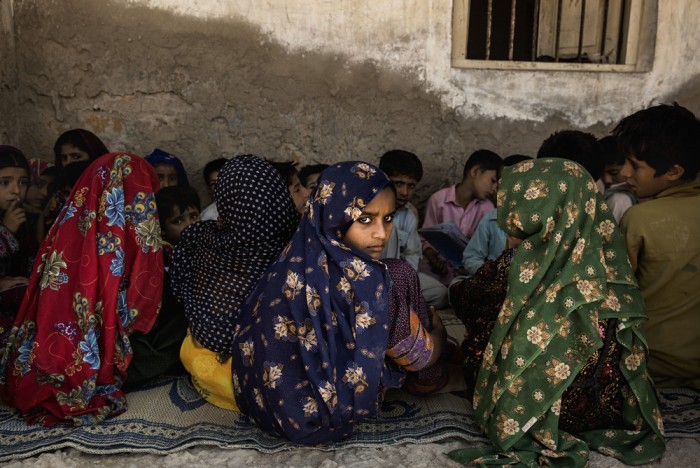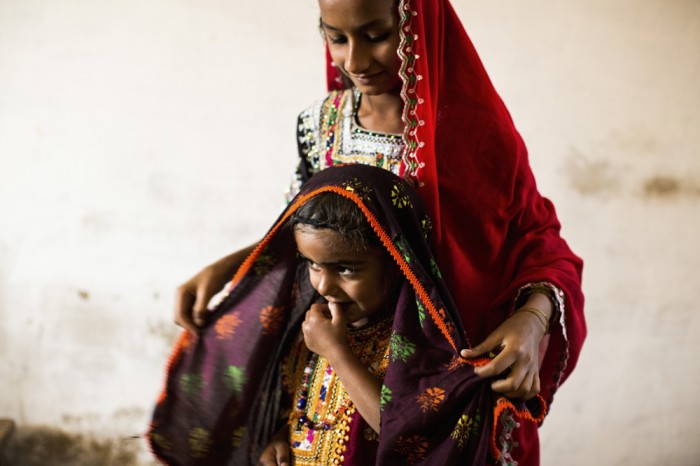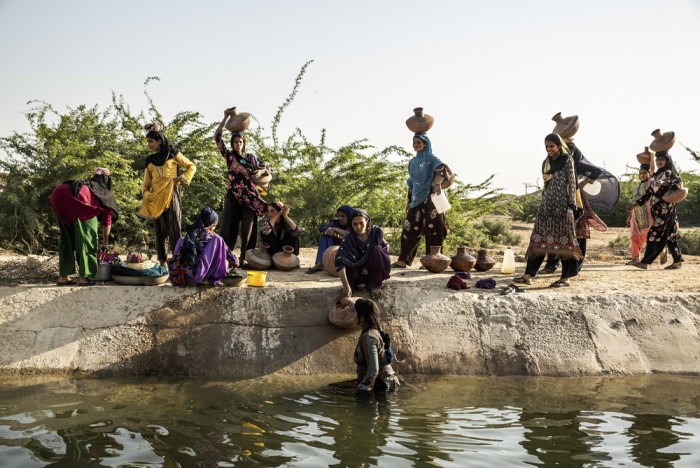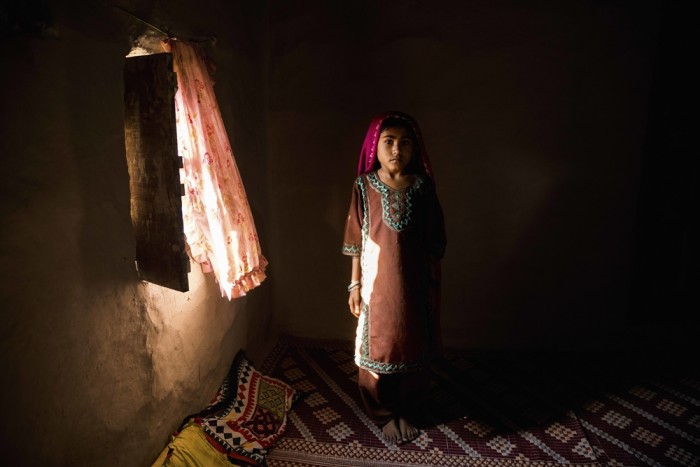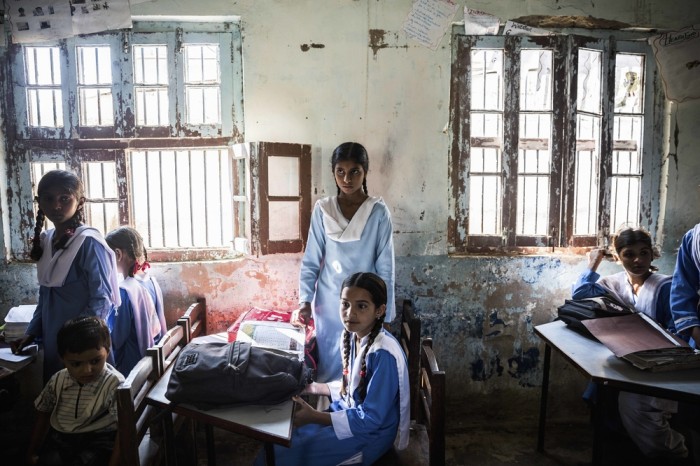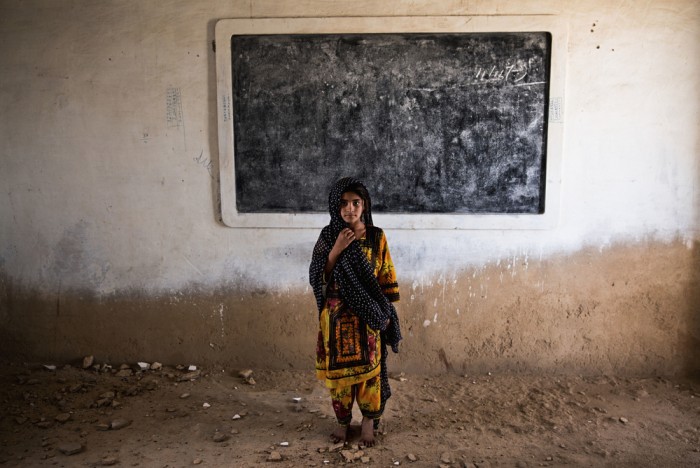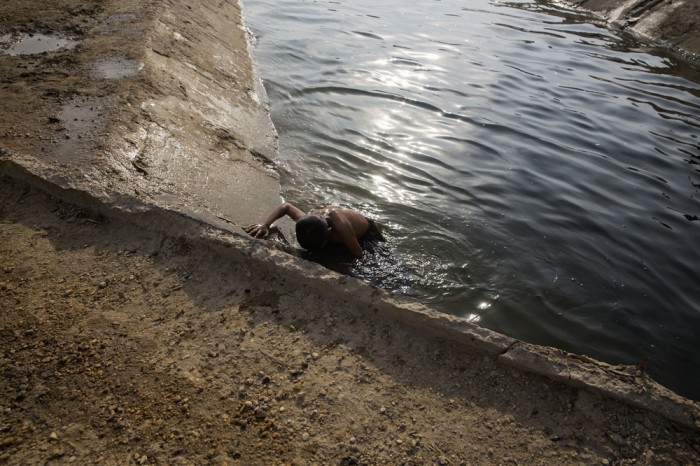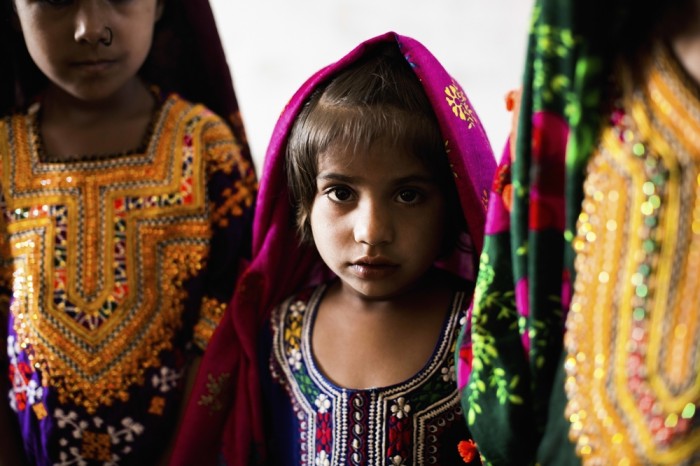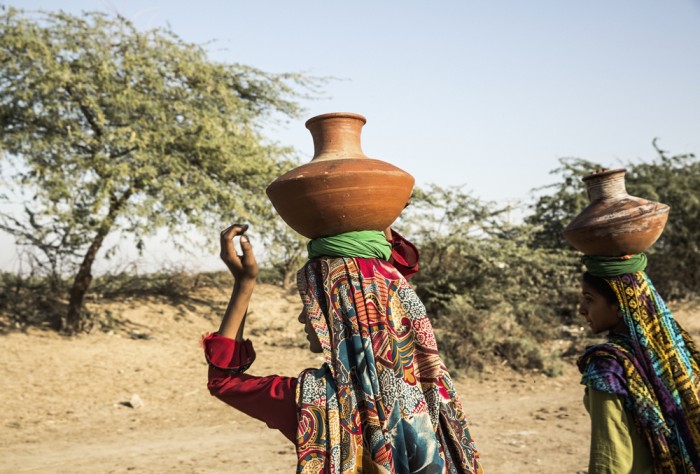Safe drinking water is inaccessible to 650 million people globally. In Pakistan, it is estimated that the country may run dry by 2025 if immediate action is not taken. But, marred by internal conflict and the threat of a terrorist insurgency, the Pakistani government have been reluctant to put water scarcity at the top of their priority list. Teaming up with WaterAid and funded by the H&M Foundation, Swedish-Eritrean photojournalist Malin Fezehai set out to document the people most affected by the crisis, the children of Pakistan.
Fezehai captured 31 images the Thatta region in southeastern Pakistan. She documented the effects of climate change and water scarcity on the lives of schoolchildren living in the Indus River Delta. Through her images, we follow Fezehai’s journey through the canals and inlets of the Indus River Delta, as it flows from one of Pakistan’s largest and most beautiful lakes, the Keenjhar – the source of drinking water for Karachi’s 16.6 million inhabitants – through to the schools and communities in the region.
Fezehai's photographs are focussed on schools where the H&M Foundation, WaterAid, and National Rural Support Program are building safe drinking water facilities and bathrooms designed to be resistant to flooding and saline erosion.
The photographs form part of an exhibition titled, Noori Tales: Stories from the Indus Delta. The exhibit was on show as part of the Kulturfestivalen from 16 to 21 August and World Water Week in Stockholm from 28 August to 2 September, the annual focal point for global water issues.
The exhibit also lives online where viewers can view the photographs and the accompanying stories. Here’s a brief look at the project:

